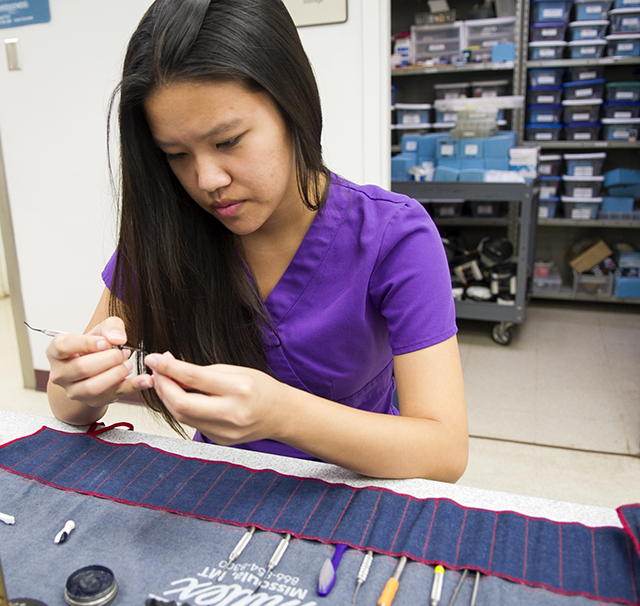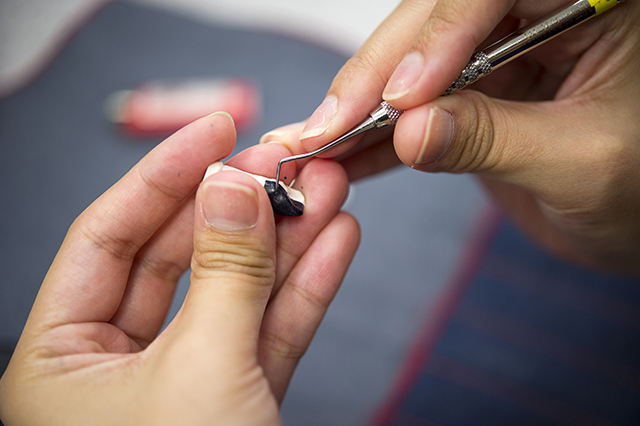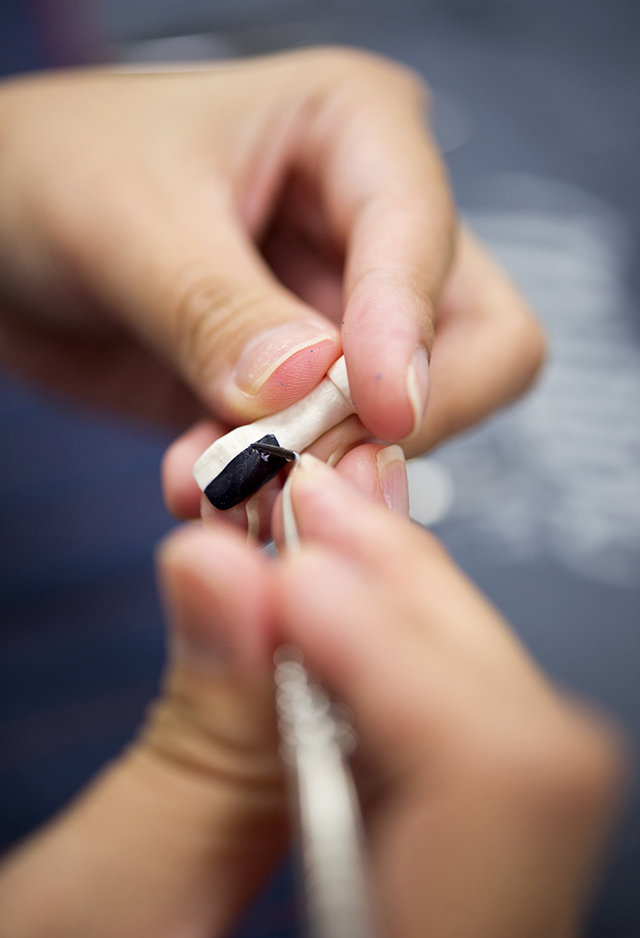Waxing a tooth: a handy how-to column

Fourth-year student Ticole Nguyen’s approach to this dental school essential
It’s one of the first things incoming students learn during their dental school careers — and in some cases, before they become a student at Texas A&M University Baylor College of Dentistry. A wax-up doesn’t just help dentists assess the restorative needs of their patients; it also helps give patients a true-to-life preview of how their new smiles will look. In the dental school setting, this exercise prepares students for placing fillings and making crowns by helping them learn a tooth’s anatomy and how it impacts the other teeth in the mouth.
So what are wax-ups, exactly? Just like the name implies, wax-ups are made by applying wax onto a crown preparation in order to create a tooth shape. With a bit of carving and modification, a wax-up serves as a working model — similar to a blue print for architectural projects — before commencing dental rehabilitation. Full-contour wax-ups have an added benefit: They can be used to create functional temporaries to give patients an idea for what real crowns will be like later on.
Fourth-year dental student Ticole Nguyen began doing wax-ups at TAMBCD years before she enrolled here. An avid participant in the college’s Summer Predental Enrichment Program during her high school days, Nguyen now instructs dental school hopefuls in the diagnostic technique.
 The first rule of waxing, Nguyen says, is to know the anatomy of the tooth you’re trying to replicate.
The first rule of waxing, Nguyen says, is to know the anatomy of the tooth you’re trying to replicate.
“Each tooth has its own unique shape and characteristics you have to incorporate. Some characteristics are pretty subtle, and it takes a while to notice them,” Nguyen says.
The hardest part of instructing others in this tried-and-true component of a dental education: “Knowing that there are many ways to get to the end result,” Nguyen says. “You have to figure out your own method. I’m sure if you ask 50 dental students, they each have their own ways of waxing.”
 The process
The process
Now, Nguyen tells us how waxing this tooth — a No. 9 incisor — is as easy as 1-2-3, or almost. Here it is, in seven steps …
- First, heat the large end of the waxing spatula, place it in the wax and transfer the melted wax to the pedestal tooth.
- Build up the desired thickness of wax before you start carving.
- Contour the wax to the desired shape.
- Fill the voids and scratches with a smaller instrument.
- Gently brush the entire waxed area with a soft toothbrush.
- Follow up with the final polishing using a piece of panty hose.
- Check for any remaining scratches or rough areas, and repeat above steps, if necessary.